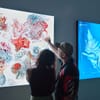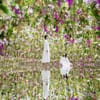A talk with artist Laura Benetton and professor Dr. Ernest Giralt from the biomedical research center IRB in Barcelona explored new forms of exchange by collaborating at the intersection of art and science.
“New technology is common, new thinking is rare” is a famous quote by Sir Peter Blake. It best describes what we need today to tackle the challenges of tomorrow in a complex and fast-changing world.
Blake’s quote highlights the importance of advancing technology and encouraging innovative thinking to drive progress. Hybrid thinking is one tool that can help us deal with the challenges of the 21st century.
It’s a problem-solving approach that advocates for cross-disciplinary collaboration to tackle society’s challenges. Complex problems cannot be solved by a single individual or discipline alone. Combining analytical, intuitive, creative, and critical thinking makes complex problems easier to understand and tackle.
How can different disciplines enrich one another? Last week in Barcelona, during the finissage of the “Italic BOLD” exhibition at the Hub/Art Gallery in Poblenou, a talk explored this cross-disciplinary approach at the intersection of art and science.
Laura Benetton, a performance artist in light installation, sculpture, and bio art, presented her research in bioluminescence by studying algae and V. Fisheri bacteria. Squids and fish use the light produced by the bacteria to attract mates, camouflage, and detect prey.
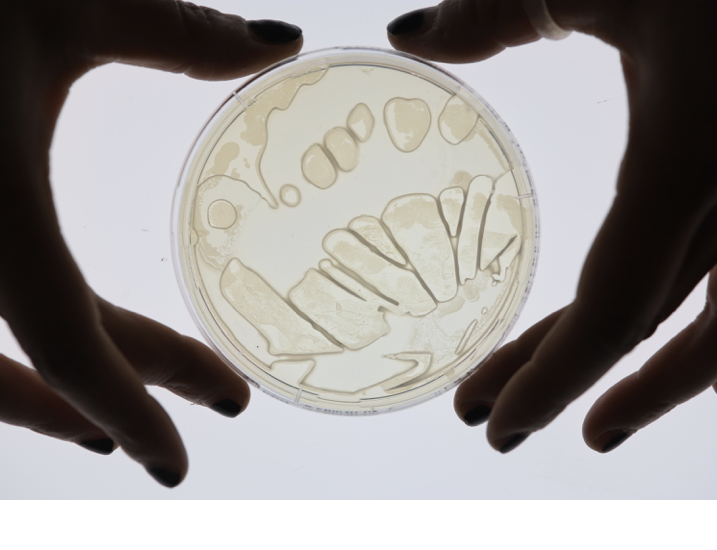
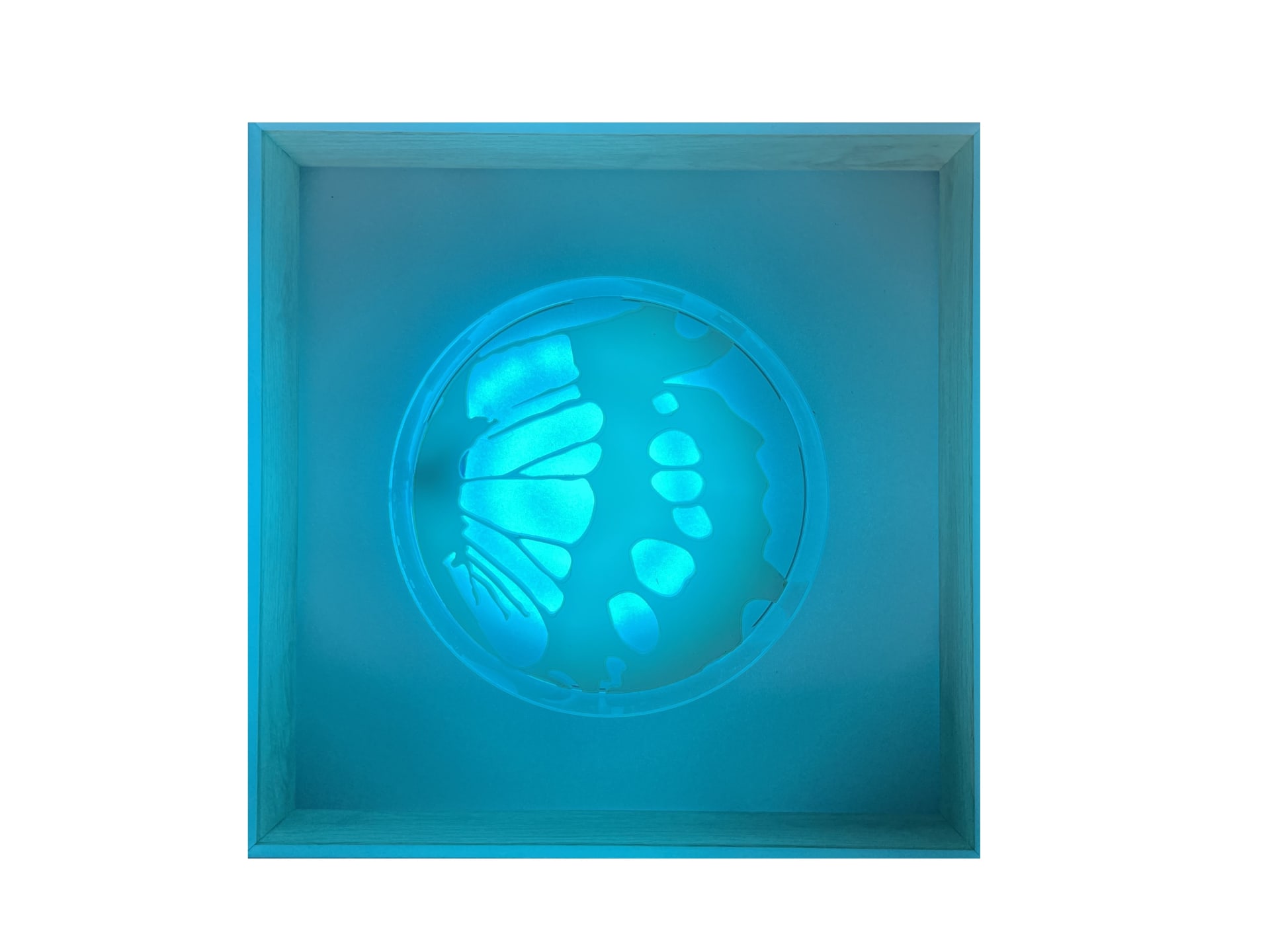
In her practice related to life sciences, Benetton asks: Can these living organisms be incorporated into modern art to create inventive and environmentally friendly bio-light installations? Can artists use their creations to contribute to our understanding of luminous phenomena?
She shared the stage with Dr. Ernest Giralt, a professor at the renowned biomedical research center IRB in Barcelona. As a scientist and music producer, he aims to foster greater collaboration and understanding between the sciences and the humanities.
In line with this aim, he co-founded the IRB Barcelona’s artist residency program connecting artists interested in science with the wide range of research, data, and infrastructures available at the Institute.
This year, IRB has selected Laura Benetton as the artist in residency. “Through a transdisciplinary dialogue between the studio and the lab space, IRB Barcelona’s cross-pollination approach between contemporary arts and science offers a singular chance for scientists and artists to grow and expand their thinking processes and investigations,” comments Benetton.
From Butterflies to Bioluminesce: Merging Science and Creativity
Benetton’s interest in the intersection of art and science sparked while investigating butterfly species from London. She wondered: “How is it possible that there are all these vibrant colors in nature, and nobody is aware of them?” So she deepened her research with butterfly species from Colombia and translated her findings into abstract and dynamic paintings applying color and movement.
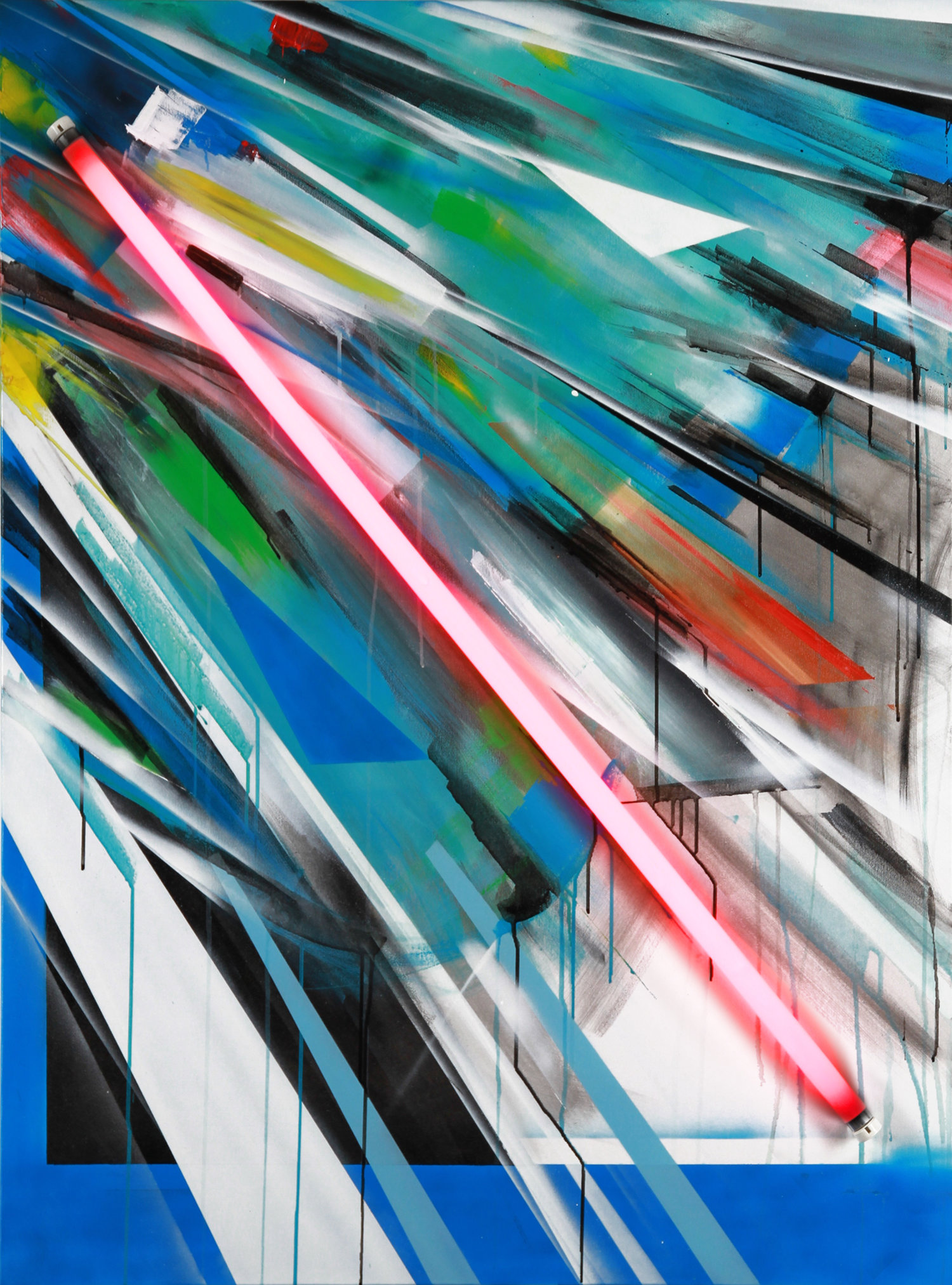
During her Masters’s degree at Central Saint Martins, she also started working at a laboratory in London to experiment with bioluminescent bacteria as a living medium. The art project called Bio Moon Lab challenged her practice in various ways:
“Working in the lab with scientists was not easy at the beginning. I had to get familiar with the scientific processes and the fact that failure is inevitable. As an artist, you trust the creative process intuitively and are confident that you can somehow realize the idea you have in mind.
In science, it doesn’t work this way. There is a particular procedure you have to follow. For example, if you need two milligrams of a specific chemical, and instead you use five milligrams, the outcome will be very different.
Working with living organisms such as bacteria is challenging as they require much care. Many times my bacteria died, which was frustrating. But the greatest lesson I’ve learned from working with scientists is that no matter how often you fail, you keep going and never stop believing in your work.
In my previous pieces, I have integrated LED light tubes as part of my paintings, and I wondered: Is there a chance that I can recreate this light source by using bioluminescent bacteria?
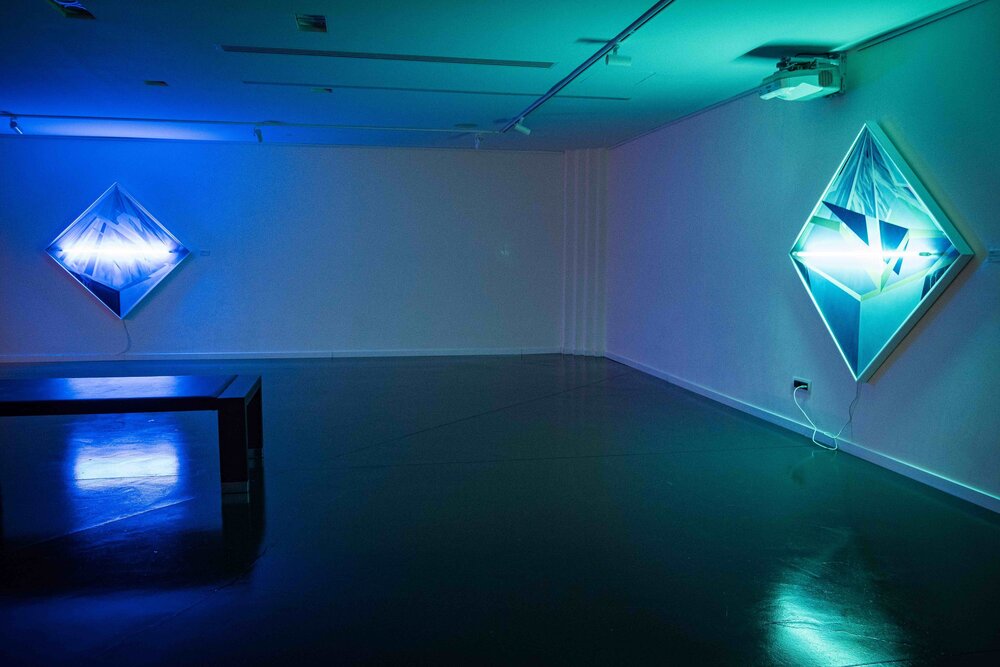
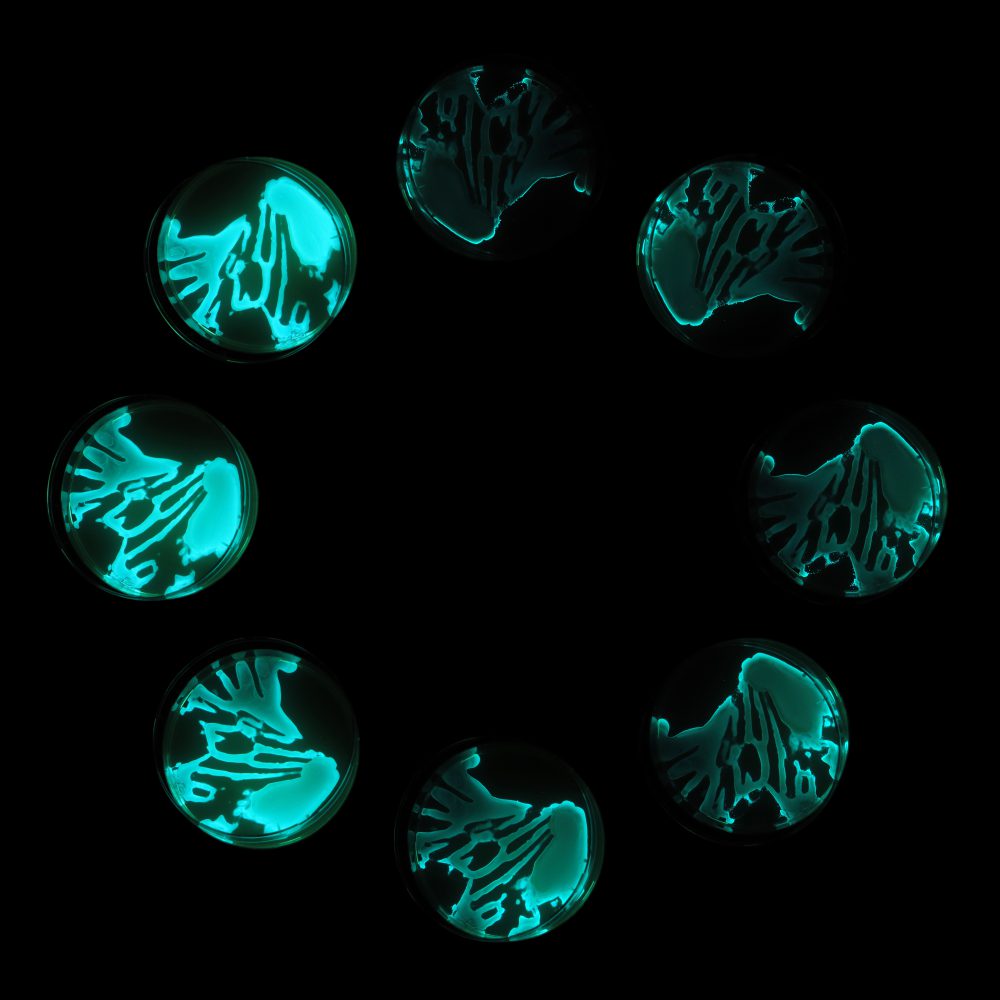
So I started to experiment with a bioreactor. A bioreactor is a device that supports the growth of microorganisms, such as bacteria or cells, under controlled conditions. It provides an environment that allows for the optimal growth and reproduction of the bacteria.
Through this method, the light inside evolved until the entire tube oscillated. This showed me this is actually doable. I then created the project Bio Moon as a time-lapse video that captured the growth of bacteria in a petri dish so that people could follow the light-evolution over 72 hours.
Through her art, Laura aims to encourage a cultural discussion, foster the public’s interest in science and promote the idea of more sustainable art practice. She believes investing more in science education and fostering a dialogue with the public can benefit society.
Dr. Ernest Giralt on Exploring the Beauty of Science
To Dr. Ernest Giralt, science, and art have more in common than first meets the eye: “Although science is a systematic and methodical approach to finding solutions, it’s also a field full of surprises and beauty.
This is particularly true for organic synthesis, a branch of chemistry that involves the preparation of molecules that have never existed before, either on Earth or in the universe—one remarkable example of the organic molecule cubane, named after its unique and symmetrical cubic shape.
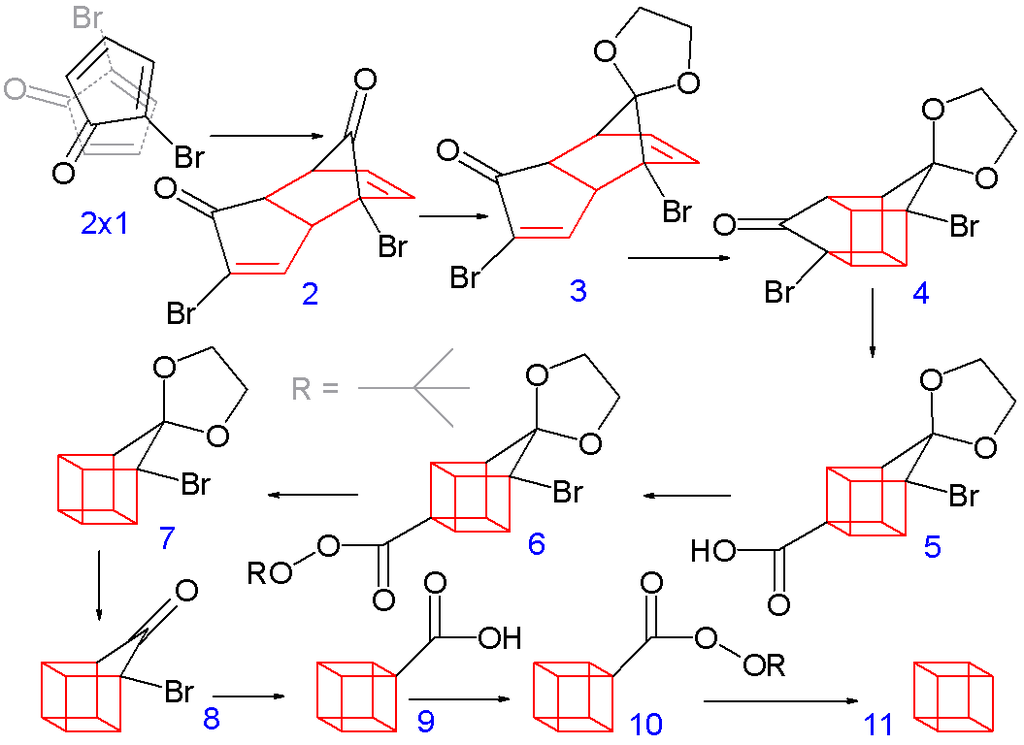
Creating it was considered an impossibility until, after many years of effort and dedication, a team of researchers at Harvard University had a breakthrough and managed to synthesize it in 1964. This, to me, is an example of scientific beauty.
But there are even more commonalities between art and science. Both fields modulate our brain structure and change our perception of the world. I recently read an article in which a neuroscientist explained how our brain is completely isolated from the outside world.
Our perception only starts when sensory receptors in the eyes, ears, nose, skin, and tongue detect physical stimuli from the environment, which are transformed into neural signals that travel through neural pathways to the brain. With these electric impulses, the brain creates what we think is the world around us.
Then comes culture and changes our perception of the world. Art and science are two of the essential pillars of culture. I will name a scientific example: Imagine a snowball rolling down a hill. You might immediately think of Newton’s laws of motion and gravity, which he discovered in the 17th century.
But suppose you had asked Plato in ancient Greece or Leonardo Da Vinci. In that case, their perception of a snowball rolling down a hill would have been very different simply because Newton hadn’t yet been born, and nobody knew of gravity.
This is only one example of how culture changes our understanding and perception of the world. You can also apply this principle to art. If you look at Van Gogh’s famous painting Sunflower afterward, you will look at sunflowers differently. The experience has changed your perception.”
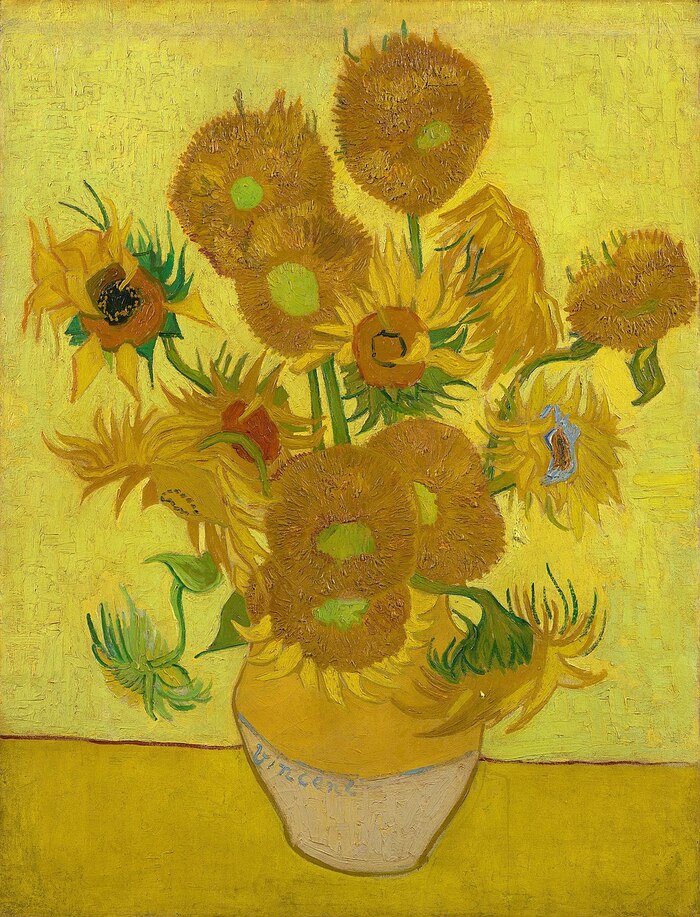
The intersection of art and science provides a unique opportunity to adopt the approach of hybrid thinking. Artist Laura Benetton and scientist Dr. Ernest Giralt showcase the potential for collaboration between the two fields.
Laura’s work with bioluminescent bacteria and Dr. Giralt’s example of the organic molecule cubane demonstrate the beauty of science and the possibilities of innovative thinking when the two cultures intersect.
We can work towards a more sustainable and better future by encouraging collaboration between the sciences and humanities and investing in science education. It is time to embrace hybrid thinking to unlock new ways of understanding the world.
The quotes have been condensed and edited for length and clarity.
[/vc_column_text][/vc_column][/vc_row][vc_row][vc_column][vc_empty_space][vc_tta_accordion title_tag=”h3″ active_section=”1″ title=”FAQs”][vc_tta_section title=”What is Bio Art?” tab_id=”1679252292955-b86d119c-3fe6″][vc_column_text]
Bioart is a form of contemporary art that uses scientific research, living organisms, living tissue or biological processes as a medium. Bioartists often work in collaboration with scientists and use genetic engineering, tissue culture, and other biotechnologies to create living art pieces that explore the intersection of art and science.
[/vc_column_text][/vc_tta_section][vc_tta_section title=”What materials are used to create Bio Art?” tab_id=”1679252292955-8c534e7f-7086″][vc_column_text]
Living organisms such as bacteria, fungi, plants, and animals bio artists often use in bioart. Artists might grow plants or cultivate bacteria to create living sculptures or use living organisms as part of a performance or installation. Bioart often involves materials that are biodegradable or have a low environmental impact. This could include using organic materials such as wood, paper, or natural fibers for sculptures or installations.
[/vc_column_text][/vc_tta_section][vc_tta_section title=”What is the purpose of BioArt?” tab_id=”1679252332354-ac8690e1-e98d”][vc_column_text]
Bio artists aim to raise awareness about environmental issues, genetic engineering, biotechnology, or other scientific topics. It’s is a way for artists to explore the intersections of art and science. By using living organisms or biological processes in their art, bioartists are able to create works that challenge traditional notions of art and push the boundaries of what is possible.
Bioart can be used to provoke thought and encourage viewers to consider their relationship with the natural world. By using living organisms as a medium, bioartists can create works that highlight the interconnectedness of all living things and the importance of protecting our planet.
[/vc_column_text][/vc_tta_section][vc_tta_section title=”Where is green fluorescent protein found?” tab_id=”1679255077152-5d6de5e5-2171″][vc_column_text]Green fluorescent protein (GFP) is a protein that can naturally fluoresce, or emit light, when exposed to certain wavelengths of light. It was originally isolated from the jellyfish Aequorea victoria, which produces the protein as a way to bioluminesce and attract prey.[/vc_column_text][/vc_tta_section][vc_tta_section title=”What are Vibrio Fischeri bacteria?” tab_id=”1679255300732-cd9c3e6f-9a7d”][vc_column_text]Vibrio fischeri is a type of gram-negative, bioluminescent bacteria that forms symbiotic relationships with certain marine organisms, such as squids and fish. This bacterium is notable for its ability to produce light through a process called bioluminescence, which is the emission of light by living organisms.[/vc_column_text][/vc_tta_section][/vc_tta_accordion][/vc_column][/vc_row][vc_row][vc_column][/vc_column][/vc_row]



